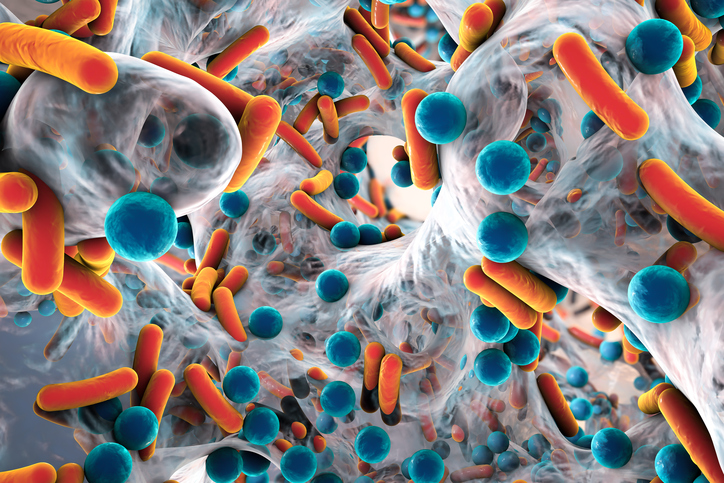Researchers at St. Jude Children’s Research Hospital have discovered a way to turn a multi-drug bacterium’s defenses against itself, a finding that opens new pathways to help combat increases in antibiotic-resistant infections. The research, published in Nature Biotechnology, details the use of a structurally modified form of the drug florfenicol hijacks the resistance mechanism in Mycobacterium abscessus, to amplify the drug’s effect “in perpetuity.”
“One of the most prominent groups at risk of M. abscessus infections is critically ill patients, like we have at St. Jude,” said senior author Richard Lee, PhD, a member of the department of chemical biology and therapeutics at St. Jude. “Since this bacterium is intrinsically resistant, treating patients with strong antibiotics for long enough just means only the most antibiotic-resistant bugs survive, which is why these infections are problematic.”
The team focused on M. abscessus because of its complex set of resistance mechanisms that require antibiotics to surpass each one to be effective. It has been referred to as an “antibiotic nightmare,” as it requires long-term treatments that can often lead to mitochondrial toxicity and hearing loss.
At the center of M. abscessus resistance is a set of antibiotic-limiting gene called WhiB7. This intrinsic “resistome” is a “master regulator of ribosomal stress, and many antibiotics used to treat mycobacteria target the ribosome,” said first author Gregory Phelps, PhD, a postdoctoral researcher at St. Jude. “Anytime you use antibiotics such as chloramphenicol or clarithromycin, WhiB7 is activated and controls over 100 proteins involved in antimicrobial resistance. It’s a barrier for effective therapeutics.”
While working to develop analogs of the antibiotic chloramphenicol during their research, the team found that a modified version of the broad spectrum antibiotic florfenicol, called florfenicol amine, acted in a surprising way. The compound killed normal M. abscessus but had no effect on a strain lacking WhiB7. “This was the opposite of what we expected, and it was repeatable,” said Phelps. “That suggested something unusual was happening.”
Further study revealed that florfenicol amine behaves as a prodrug, remaining inactive until it is converted to its active form inside the bacterium. For this conversion it uses Eis2, an enzyme that WhiB7 itself activates as part of the resistance response. As florfenicol amine enters the bacterium, it triggers WhiB7, which boosts Eis2 production. Eis2 then converts florfenicol amine into its active antibiotic form, florfenicol acetyl, inhibiting the bacterial ribosome, which further activates WhiB7. The feed-forward loop that is created by these interactions continuously amplifies the drug’s activity.
“The exciting part of this proof-of-concept is that it shows you can use the resistance genes to actually reverse resistance,” Lee said. “Many antibiotics hit mitochondria, which leads to mitochondrial toxicity, a real problem with this class of drugs. But this pathway avoids mitochondrial toxicity, giving it a much larger safety window. This is the real advantage of this approach.”
The St. Jude research was informed by earlier studies of other antibiotic analogs, such as those of tetracycline, rifamycin, and spectinomycin, which have indicated that structural modification of antibiotics could help the drug evade resistance.
Previous studies on next-generation antibiotic analogs—such as tetracycline, rifamycin, and spectinomycin derivatives—guided this research by demonstrating that structural modification could bypass resistance enzymes. The St. Jude team’s discovery that it can use a bacteria’s own resistance mechanisms to make it more vulnerable to treatment is a significant breakthrough considering the significant burden drug-resistant infections place on health systems around the world.
While the new research only showed the ability to exploit this weakness in M. abscessus and other closely related bacteria, there is hope the same approach can be applied to other recalcitrant bacteria.
“We’re looking at how generalizable this strategy is,” said Phelps. “With data science and structural biology, we can begin to identify high-impact proteins in clinically relevant pathogens.”
The researchers are now looking to refine the potency and pharmacokinetics of florfenicol analogs and explore similar “resistance hacking” strategies in other bacteria. They are also designing next-generation phenicol prodrugs with improved efficacy and tolerability, aiming to transform resistance itself into a tool for antibiotic innovation.

